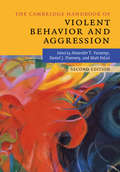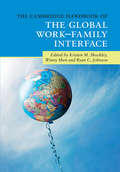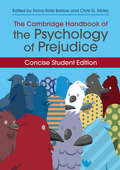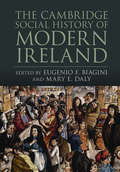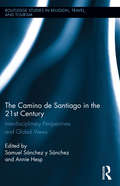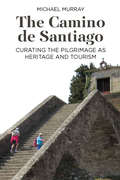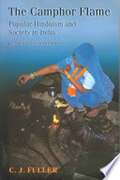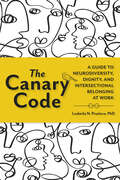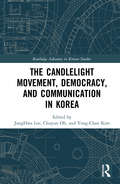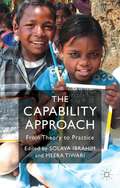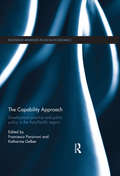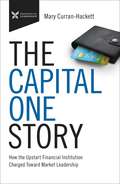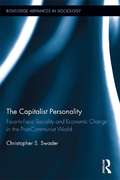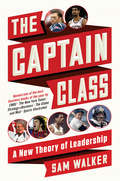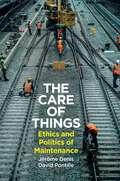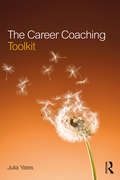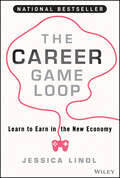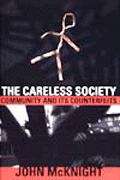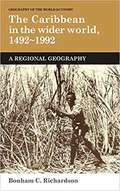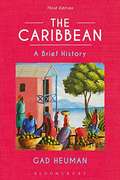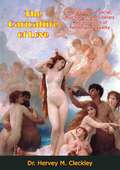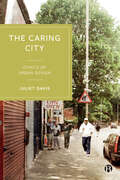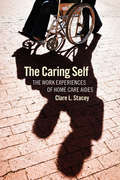- Table View
- List View
The Cambridge Handbook of Violent Behavior and Aggression (Cambridge Handbooks in Psychology)
by Daniel J. Flannery Alexander T. Vazsonyi Matt DeLisiThe Cambridge Handbook of Violent Behavior and Aggression presents the current state of knowledge related to the study of violent behaviors and aggression. An important extension of the first Handbook published ten years ago, the second edition maintains a distinctly cross-disciplinary focus by representing the newest scholarship and insights from behavior genetics, cross-cultural comparative psychology/criminology, evolutionary psychology, criminal justice, criminology, human development, molecular genetics, neurosciences, psychology, prevention and intervention sciences, psychiatry, psychopharmacology, public health, and sociology. The Handbook is divided into introductory and overview chapters on the study of violent behavior and aggression, followed by chapters on biosocial bases, individual and interpersonal factors, contextual factors, and prevention and intervention work and policy implications. It is an essential resource for researchers, scholars, and graduate students across social and behavioral science disciplines interested in the etiology, intervention, and prevention of violent behavior and aggression.
The Cambridge Handbook of the Global Work–Family Interface (Cambridge Handbooks In Psychology )
by Kristen M. Shockley Winny Shen Ryan C. JohnsonThe Cambridge Handbook of the Global Work-Family Interface is a response to growing interest in understanding how people manage their work and family lives across the globe. <P><P>Given global and regional differences in cultural values, economies, and policies and practices, research on work-family management is not always easily transportable to different contexts. Researchers have begun to acknowledge this, conducting research in various national settings, but the literature lacks a comprehensive source that aims to synthesize the state of knowledge, theoretical progression, and identification of the most compelling future research ideas within field. <P>The Cambridge Handbook of the Global Work-Family Interface aims to fill this gap by providing a single source where readers can find not only information about the general state of global work-family research, but also comprehensive reviews of region-specific research. It will be of value to researchers, graduate students, and practitioners of applied and organizational psychology, management, and family studies.<P> Provides summaries of work-family research in nine regions across the globe.<P> Presents a broad, international, cross-cultural approach to the work-family interface.<P> Appeals to those with an interest in starting cross-cultural work-family research.
The Cambridge Handbook of the Psychology of Prejudice: Concise Student Edition (Cambridge Handbooks in Psychology)
by Fiona Kate Barlow Chris G. SibleyThe Cambridge Handbook of the Psychology of Prejudice: Concise Student Edition aims to answer the questions: why is prejudice so persistent? How does it affect people exposed to it? And what can we do about it? With cutting-edge research from top scholars in the field, the chapters present an overview of psychological models of prejudice and investigate key domains such as racism, sexism, and the criminal justice system. This student edition of the award-winning Handbook includes new pedagogical features such as learning objectives, core terms and definitions, summary points, discussion questions, recommended readings, and instructor's test bank. It also features a new conclusion chapter that analyzes eight hard problems currently faced by researchers and activists, thus engaging students in deep, forward-thinking discussion. Developed specifically for use in Psychology of Prejudice courses at the undergraduate and graduate levels, the Concise Student Edition is an essential teaching and learning resource.
The Cambridge History of Religions in Latin America
by Virginia Garrard-Burnett Garrard-Burnett, Virginia and Freston, Paul and Dove, Stephen C. Paul Freston Stephen C. DoveThe Cambridge History of Religions in Latin America covers religious history in Latin America from pre-Conquest times until the present. This publication is important; first, because of the historical and contemporary centrality of religion in the life of Latin America; second, for the rapid process of religious change which the region is undergoing; and third, for the region's religious distinctiveness in global comparative terms, which contributes to its importance for debates over religion, globalization, and modernity. Reflecting recent currents of scholarship, this volume addresses the breadth of Latin American religion, including religions of the African diaspora, indigenous spiritual expressions, non-Christian traditions, new religious movements, alternative spiritualities, and secularizing tendencies.
The Cambridge Social History of Modern Ireland
by Mary E. Daly Biagini Eugenio F.Covering three centuries of unprecedented demographic and economic changes, this textbook is an authoritative and comprehensive view of the shaping of Irish society, at home and abroad, from the famine of 1740 to the present day. The first major work on the history of modern Ireland to adopt a social history perspective, it focuses on the experiences and agency of Irish men, women and children, Catholics and Protestants, and in the North, South and the diaspora. An international team of leading scholars survey key changes in population, the economy, occupations, property ownership, class and migration, and also consider the interaction of the individual and the state through welfare, education, crime and policing. Drawing on a wide range of disciplinary approaches and consistently setting Irish developments in a wider European and global context, this is an invaluable resource for courses on modern Irish history and Irish studies.
The Camino de Santiago in the 21st Century: Interdisciplinary Perspectives and Global Views (Routledge Studies in Pilgrimage, Religious Travel and Tourism)
by Samuel Sánchez y Sánchez Annie HespThe Spanish Camino de Santiago, a pilgrimage rooted in the Medieval period and increasingly active today, has attracted a growing amount of both scholarly and popular attention. With its multiple points of departure in Spain and other European countries, its simultaneously secular and religious nature, and its international and transhistorical population of pilgrims, this particular pilgrimage naturally invites a wide range of intellectual inquiry and scholarly perspectives. This volume fills a gap in current pilgrimage studies, focusing on contemporary representations of the Camino de Santiago. Complementing existing studies of the Camino’s medieval origins, it situates the Camino as a modern experience and engages interdisciplinary perspectives to present a theoretical framework for exploring the most central issues that concern scholars of pilgrimage studies today. Contributors explore the contemporary meaning of the Camino through an interdisciplinary lens that reflects the increasing permeability between academic disciplines and fields, bringing together a wide range of theoretical and critical perspectives (cultural studies, literary studies, globalization studies, memory studies, ethnic studies, postcolonial studies, cultural geographies, photography, and material culture). Chapters touch on a variety of genres (blogs, film, graphic novels, historical novels, objects, and travel guides), and transnational perspectives (Australia, the Arab world, England, Spain, and the United States).
The Camino de Santiago: Curating the Pilgrimage as Heritage and Tourism
by Michael MurrayPilgrimage, as a global activity linked to the sacred, speaks to the special significance of persons, places and events. This book relates these sentiments to the curatorship of the Camino de Santiago that comprises a lattice of European pilgrimage itineraries converging at Santiago de Compostela in northwest Spain. The detailed analysis focuses on the management of pilgrimage settings as heritage and tourism linked to the shrine of Saint James and gives particular attention to investment guidelines, land use planning regulations, environmental stewardship, information dissemination and museology.
The Camphor Flame: Popular Hinduism And Society In India
by C. J. FullerPopular Hinduism is shaped, above all, by worship of a multitude of powerful divine beings--a superabundance indicated by the proverbial total of 330 million gods and goddesses. The fluid relationship between these beings and humans is a central theme of this rich and accessible study of popular Hinduism in the context of the society of contemporary India. Lucidly organized and skillfully written, The Camphor Flame brings clarity to an immensely complicated subject. C. J. Fuller combines ethnographic case studies with comparative anthropological analysis and draws on textual and historical scholarship as well. The book's new afterword brings the study up-to-date by examining the relationship between popular Hinduism and contemporary Hindu nationalism.
The Canary Code: A Guide to Neurodiversity, Dignity, and Intersectional Belonging at Work
by Ludmila N. Praslova, PhDExclusion robs people of opportunities, and it robs organizations of talent. In the long run, exclusionary systems are lose-lose.How do we build win-win organizational systems?From a member of the Thinkers50 2024 Radar cohort of global management thinkers most likely to impact workplaces and the first person to have written for Harvard Business Review from an autistic perspective comes The Canary Code—a guide to win-win workplaces.Healthy systems that support talent most impacted by organizational ills—canaries in the coal mine—support everyone. Currently, despite their skills and work ethics, members of ADHD, autism, Tourette Syndrome, learning differences, and related communities face drastic barriers to hiring and advancement. In the U.S., 30-40% of neurodivergent people and 85% of autistic college graduates struggle with unemployment. Like canaries in the mine, they are impacted by issues that ultimately harm everyone. Lack of flexibility, transparency, and psychological safety excludes neurodivergent, disabled, and multiply marginalized talent—and leaves most employees stressed and disengaged. This unique book is a guide to change-making for CEOs, managers, HR leaders, and everyone who wants to contribute to building a more inclusive world. The authors' over 25 years of experience spanning global diversity to neurodiversity leadership and extensive research on innovative practices of uniquely inclusive organizations around the world inform this books':Explicitly intersectional approach to (neuro)inclusionHolistic understanding of humans and their social, cognitive, emotional, and physical differences. Holistic approach to organizational talent practices, from creating job descriptions and recruiting to onboarding, performance management, and leadership development.A globally inclusive approach that centers, celebrates and invites multiple voices from the neurodivergent community.A lead from where you are approach to change-making.This groundbreaking book combines the lived experience with academic rigor, innovative thought leadership, and lively, accessible writing. To support different types of readers, academic, applied, and lived experience content is clearly identified, helping readers choose their own adventure.
The Candlelight Movement, Democracy, and Communication in Korea (Routledge Advances in Korean Studies)
by Lee JongHwa Oh Chuyun Kim Yong-ChanThis book examines key features, problems, and implications of the 2016–2017 Candlelight Movement, a historical cornerstone for democracy and social movements in South Korea. The Candlelight Movement brought profound social changes with important lessons and questions for scholars, practitioners, activists, and the public. To examine the full complexity of the movement, this edited volume utilises wide-ranging methodological and theoretical approaches, which include case study approaches, ethnography, survey, feminist film criticism, critical discourse analysis, and rhetorical criticism. Chapters place ‘communication’ at the centre of their analyses, calling attention to the mediated and mediatised, the performative and other discursive practices of the 2016–2017 Candlelight Movement. In doing so, the book discusses not only the usual players and factors – nor the institutions that exert their influence through democratic politics and the public sphere – but also the counter-public embracing new and social media, collective singing, the body, and performance, as their choice of political media. As such, this volume offers important insights into how communication plays a critical role in forming, moving, and transforming new social movements. The Candlelight Movement, Democracy, and Communication in Korea will appeal to students and scholars of communication and media studies, political science, sociology, and Korean studies.
The Capability Approach
by Solava Ibrahim Meera TiwariHow can human capabilities be articulated and promoted in practice? How can the challenges encountered in its application be addressed? This volume answers these research questions through nine country case studies from the Global North and the Global South.
The Capability Approach: Development Practice and Public Policy in the Asia-Pacific Region (Routledge Advances in Social Economics #18)
by Francesca Panzironi Katharine GelberThis book provides a unique laboratory of ‘capabilities in practice’ in the Asia-Pacific region. It explores the application of the capability approach in development practice and public policy from a multidisciplinary perspective by bringing together scholars and practitioners from a wide range of disciplinary backgrounds, including development studies, health policy, political science, political theory, political economy, architecture, indigenous studies, urban planning and communication technologies. The first part of the book provides a foundational theoretical framework to introduce the empirical applications of the capability theory in different areas of development practice and public policy in the Asia-Pacific region. This part discusses thorny issues in capability theory and raises the potential for capability theory to lead to new ways of thinking about old problems. The second part discusses the application of the capability approach to intransigent problems of marginalisation and the articulation of public policy in New Zealand and Australia. In particular, this part focuses on the potential implications that a capability-based approach can have on the well-being of indigenous peoples in both countries, as well as children, older renters, and urban dwellers in Australia. The third part elucidates how capability theory is being applied by researchers in the Asia-Pacific region to local issues in developing countries such as Samoa, Vanuatu, Papua New Guinea and Sri Lanka. In doing so, it provides original content to the world market in capability theory by focussing on this often-neglected area of scholarship. As a whole, this volume offers a unique and innovative scrutiny of a multifaceted capability-based analysis of development practice and public policy. The scope and breadth of this volume advance the application of the capability approach and offer an indispensable resource to scholars, researchers, policy makers and policy practitioners interested in the theoretical insights and practical implications of the capability approach.
The Capital One Story: How the Upstart Financial Institution Charged Toward Market Leadership (The Business Storybook Series)
by Mary Curran HackettWhat can you learn from the most successful companies in the world? The Capital One Story will help you understand and adopt the competitive strategies, workplace culture, and daily business practices that enabled an unlikely credit card startup to revolutionize the credit industry.After twenty-five years in the credit card business, Capital One has earned its place in wallets across the world. When the company&’s two young founders set out to individualize credit, the financial world thought they were crazy…until it was clear that they weren&’t.Working in the banking industry, Richard Fairbank and Nigel Morris saw that the one-size-fits all standard that the credit card companies employed was leaving big money on the table. They cracked the code and figured out how to customize the credit card experience by offering personalized designs, credit limits, and rewards, revolutionizing the way the credit card industry operated.Known for their ubiquitous advertising campaigns with A-list talent such as Jennifer Garner and Samuel L. Jackson, the youngest bank in the business was once turned down by every one of their competitors but has since grown to dominate the industry.Through the story of Capital One, you&’ll learn:How to recognize underserved sections of a market.How rejection by every company in the business doesn&’t mean it&’s time to quit.How to determine what people want and how to get it to them.How to employ marketing campaigns that will change the way people live.Discover how this iconic organization got it right and created a successful long-lasting business, and how you can do the same for your company.
The Capitalist Personality: Face-to-Face Sociality and Economic Change in the Post-Communist World (Routledge Advances in Sociology #86)
by Christopher S. SwaderModern capitalism favors values that undermine our face-to-face bonds with friends and family members. Focusing on the post-communist world, and comparing it to more "developed" societies, this book reveals the mixed effects of capitalist culture on interpersonal relationships. While most observers blame the egoism and asocial behavior found in new free-market societies on their communist pasts, this work shows how relationships are also threatened by the profit orientations and personal ambition unleashed by economic development. Successful people in societies as diverse as China, Russia, and Eastern Germany adjust to the market economy at a social cost, relaxing their morals in order to obtain success and succumbing to increased material temptations to exploit relationships for their own financial and professional gain. The capitalist personality is internally troubled as a result of this "sellout," but these qualms subside as it devalues intimate qualitative bonds with others. This book also shows that post-communists are similarly individualized as people living in Western societies. Capitalism may indeed favor values of independence, creativity, and self-expressiveness, but it also rewards self-centeredness, consumerism, and the stripping down of morality. As is the case in the West, capitalist culture fosters an internally conflicted and self-centered personality in post-communist societies.
The Captain Class: A New Theory of Leadership
by Sam WalkerThe founding editor of The Wall Street Journal’s sports section profiles the greatest teams in history and identifies the counterintuitive leadership qualities of the unconventional men and women who drove them to succeed.The secret to winning is not what you think it is. It’s not the coach. It’s not the star. It’s not money. It’s not a strategy. It’s something else entirely. Several years ago, Sam Walker set out to answer one of the most hotly debated questions in sports: What are the greatest teams of all time? He devised a formula, then applied it to thousands of teams from leagues all over the world, from the NBA to the English Premier League to Olympic field hockey. When he was done, he had a list of the sixteen most dominant teams in history. At that point, he became obsessed with another, more complicated question: What did these freak teams have in common? As Walker dug into their stories, a pattern emerged: Each team had the same type of captain—a singular leader with an unconventional skill set who drove it to achieve sustained, historic greatness. Fueled by a lifetime of sports spectating, twenty years of reporting, and a decade of painstaking research, The Captain Class tells the surprising story of what makes teams exceptional. Drawing on original interviews with athletes from two dozen countries, as well as general managers, coaches, executives, and others skilled at building teams, Walker identifies the seven core qualities of this Captain Class—from extreme doggedness and emotional control to a knack for nonverbal communication to tactical aggression and the courage to stand apart. Told through riveting accounts of some of the most pressure-soaked moments in sports history—from Bill Russell’s legendary “Coleman Play” in the 1957 NBA Finals to Barcelona’s “Figo Game” against Real Madrid in 2000—The Captain Class doesn’t just bring these events to life; it presents a fresh, counterintuitive take on leadership that can be applied to a wide spectrum of competitive disciplines. The men and women who make up the Captain Class were never the most skilled athletes, nor were they gifted orators or paragons of sportsmanship. They were often role players who were allergic to the spotlight. In short, the seven attributes they shared challenge your assumptions of what inspired leadership looks like.Advance praise for The Captain Class“Well-researched, wildly entertaining, and thought-provoking. In The Captain Class, Sam Walker presents compelling narratives about the secret ingredient to the greatest teams of all time—and quickly makes you reexamine long-held beliefs about leadership and the glue that binds winning teams together.”—Theo Epstein, President of Baseball Operations for the Chicago Cubs“In The Captain Class, Sam Walker gives us important and original insights into the mysterious ingredients of transformative leadership. A stunning mix of research and narrative.”—Susan Cain, bestselling author of Quiet “If you care about leadership, talent development, or the art of competition, you need to read this immediately.”—Daniel Coyle, bestselling author of The Talent Code“The Captain Class is a brilliant hybrid: one-part detective story and one-part leadership book, set in the world of sports, and dedicated to a fascinating mystery: What sets apart the greatest teams of all time? I’m not even a sports nut and I couldn't put it down.”—Dan Heath, co-author of the New York Times bestseller Made to Stick
The Care of Things: Ethics and Politics of Maintenance
by Jerome Denis David PontilleWhat does a coffee machine, a car, road signs, a smartphone, a cathedral, a work of art, a satellite, a bicycle, a washing machine, a bridge, a watch, a computer, the body of a prominent politician and a tractor have in common? Pretty much nothing – except for the fact that, no matter how small, large, important or insignificant something is, it rarely survives without being cared for. Every object eventually experiences wear and tear, it deteriorates, stops working or breaks down. But are we giving the care of things the recognition it deserves? A counterpoint to our modern obsession with innovation but less striking than the one-off act of restoration, the delicate act of making things last rarely attracts our attention.This book disrupts our dominant narratives by putting those individuals skilled in the art of maintenance front and centre. Jérôme Denis and David Pontille shine a spotlight on the subtle aspects of caring for things, tracing the stories of those involved and, with them, the ethical challenges raised and political lessons learned. These people demonstrate a sensitivity and attentiveness to fragility; they encourage us to cultivate a material diplomacy in which wear is accepted and our relation to things becomes a matter of negotiation and compromise – a far cry from the frenetic rhythm of planned obsolescence inherent in hyper-consumerism. Maintenance demarcates the contours of a world in which we have relinquished the human longing for unlimited power and technological autonomy, a world where our attachment to things is more profound than we ever imagined.
The Career Arts: Making the Most of College, Credentials, and Connections
by Ben WildavskyA persuasive case for building career success through broad education, targeted skills, and social capitalYoung people coming out of high school today can expect to hold many jobs over the course of their lives, which is why they need a range of essential skills. The Career Arts provides a corrective to the widespread and misleading notion that there is a direct trade-off between going to college and acquiring practical job skills. Ben Wildavsky cuts through the noise and anxiety surrounding this issue to offer sensible, clear-eyed guidance for anyone who is making decisions about education and career preparation with a view to getting ahead in the workforce.Drawing on evidence-based research, illuminating case studies, and in-depth interviews, Wildavsky shares the most vital lessons of what he calls the career arts, which include cultivating a mix of broad and targeted skills, taking advantage of employer-funded education benefits, and preparing for the world as it is, not as you wish it could be. He explains why college remains the gold standard of credentials, and presents the most promising high-quality supplements and alternatives to college that can help learners combine general and job-specific skills. He shows how building social capital is also critical to success, particularly for disadvantaged students.An invaluable guidebook for students, parents, counselors, and educators, The Career Arts reveals why college education and job preparation are not either-or propositions and identifies the blend of education and networking needed to support real-world career aspirations.
The Career Coaching Toolkit
by Julia YatesThe Career Coaching Toolkit is a practical guide to 34 effective and relevant career coaching techniques to help practitioners encourage, stretch and clarify their clients’ thinking. Structured around ten of the most common career dilemmas clients bring to their coaches, this book provides clear advice to coaches about when to apply the right technique to address all of these problems. With a dual focus on theory and practice, each chapter explores the links between the coaching technique and the scientific research on which it is based. The book explains how and why the technique works, giving the reader a real appreciation of the underlying mechanisms that make these techniques effective. Written specifically for career coaching, this deepened understanding will enhance confidence when working with clients. A practical toolkit for practitioners and students alike, The Career Coaching Toolkit will add depth to the practice of anyone working with clients facing a career crossroads, or conducting research into occupational identities and career decision making.
The Career Game Loop: Learn to Earn in the New Economy
by Jessica LindlDesign a more fulfilling, resilient career for the new world of work In The Career Game Loop: Learn to Earn in the New Economy, veteran gaming, education, and social impact executive, Jessica Lindl, delivers an exciting playbook for navigating today’s dynamic career landscape inspired by an unlikely source - gaming. Drawing parallels between gaming and career advancement, you’ll explore why learning, earning, and advancing are continuous, interwoven, and life-long processes, and how you can navigate a fulfilling career in the 21st century economy. Lindl dives deep into the data of modern job hunting, training, networking, recruitment, and more as she tells the stories of real people who have overcome daunting obstacles to find the career they’ve always dreamed of. She also explains the mindsets, behaviors, and practice tips drawn from gaming you can implement immediately to create resilient, future-proof careers in a world where adaptability is the ultimate power-up. You’ll also find: Discussions of the Silicon Valley talent development model that helps make careers more resilient Cost-effective alternatives to the cost-prohibitive four-year degree model Resources you can access immediately to move quickly into more fulfilling, high-paying work Perfect for new graduates and young professionals just entering the global workforce, The Career Game Loop is also a must-read for anyone considering a career change, people re-entering the labor force after an absence, HR professionals, and employers from around the world seeking new insights into how modern employees think about work.
The Careless Society: Community and Its Counterfeits
by John McknightAmid all the hand-wringing about the loss of community in America these days, here is a book that celebrates the ability of neighborhoods to heal themselves from within. John McKnight shows how competent communities have been invaded and colonized by professionalized services-often with devastating results. Overwhelmed by these social services, the spirit of community falters: families collapse, schools fail, violence spreads, and medical systems spiral out of control. Instead of more or better services, the basis for resolving many of America's social problems is the community capacity of the local citizens.
The Caribbean in the Wider World, 1492-1992: A Regional Geography (Geography of the World-Economy)
by Peter Taylor Chris Dixon John Agnew Peter Gregory Roger Lee Bonham C. RichardsonThe Caribbean was Europe's first colony, its landscapes transformed to produce tropical staples and its decimated aboriginal populace replaced with African slaves. As European power has waned in the Caribbean, it has been replaced by the geopolitical domination of the United States. Professor Richardson examines this colonization and recolonization of the Caribbean during the past half millennium, portraying a region victimized by natural hazards, soil erosion, overpopulation and gunboat diplomacy. Most importantly, he explains the ways in which Caribbean peoples have reacted and adapted to their external influences. No other single survey of the region provides equivalent breadth--ranging from aboriginal ecologies to today's narcotic traffic--or harnesses so effectively elements of the past to illuminate the present.
The Caribbean: A Brief History
by Gad HeumanIn this new edition of his crucial introduction to Caribbean history, Gad Heuman provides a comprehensive overview of the region's history, from its earliest inhabitants to contemporary political and cultural developments.
The Caricature of Love: A Discussion of Social, Psychiatric, and Literary Manifestations of Pathologic Sexuality
by Dr Hervey M. CleckleyOriginally published in 1957, this book by renowned American psychiatrist Hervey M. Cleckley focuses on two chief themes: sexual disorder and its influences, and a critical examination of some concepts of sexuality which are prominent today in psychiatry and psychology.
The Caring City: Ethics of Urban Design
by Juliet DavisIn this important contribution to urban studies, Juliet Davis makes the case for a more ethical and humane approach to city development and management. With a range of illustrative case studies, the book challenges the conventional and neoliberal thinking of urban planners and academics, and explores new ways to correct problems of inequality and exclusion. It shows how a philosophy of caring can improve both city environments and communities. This is an original and powerful theory of urban care that can promote the wellbeing of our cities’ many inhabitants.
The Caring Self: The Work Experiences of Home Care Aides (The Culture and Politics of Health Care Work)
by Clare L. StaceyAccording to the Bureau of Labor Statistics, there were approximately 1.7 million home health aides and personal and home care aides in the United States as of 2008. These home care aides are rapidly becoming the backbone of America’s system of long-term care, and their numbers continue to grow. Often referred to as frontline care providers or direct care workers, home care aides—disproportionately women of color—bathe, feed, and offer companionship to the elderly and disabled in the context of the home. In The Caring Self, Clare L. Stacey draws on observations of and interviews with aides working in Ohio and California to explore the physical and emotional labor associated with the care of others. Aides experience material hardships—most work for minimum wage, and the services they provide are denigrated as unskilled labor—and find themselves negotiating social norms and affective rules associated with both family and work. This has negative implications for workers who struggle to establish clear limits on their emotional labor in the intimate space of the home. Aides often find themselves giving more, staying longer, even paying out of pocket for patient medications or incidentals; in other words, they feel emotional obligations expected more often of family members than of employees. However, there are also positive outcomes: some aides form meaningful ties to elderly and disabled patients. This sense of connection allows them to establish a sense of dignity and social worth in a socially devalued job. The case of home care allows us to see the ways in which emotional labor can simultaneously have deleterious and empowering consequences for workers.
